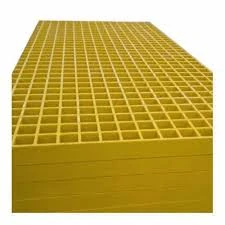loading...
- No. 9, Xingyuan South Street, Dongwaihuan Road, Zaoqiang County, Hengshui, Hebei, China
- admin@zjcomposites.com
- +86 15097380338
- Welcome to visit our website!
frp bridge deck
Innovations in FRP Bridge Decks A New Era in Infrastructure
The construction and maintenance of bridges play a crucial role in ensuring the efficiency and safety of transportation systems around the world. As infrastructure ages and the demand for sustainable solutions increases, innovative materials have emerged to address the challenges associated with traditional building methods. One such material that has gained prominence in recent years is Fiber Reinforced Polymer (FRP). FRP bridge decks represent a groundbreaking advancement in the field of civil engineering, offering numerous benefits over traditional materials like concrete and steel.
What is FRP?
Fiber Reinforced Polymer (FRP) is a composite material made from a polymer matrix reinforced with fibers, commonly made of glass, carbon, or aramid. This combination results in a lightweight, high-strength material that exhibits impressive corrosion resistance, durability, and energy efficiency. The incorporation of FRP in bridge deck construction helps mitigate several key issues faced by engineers, including weight constraints, material fatigue, and environmental degradation.
Advantages of FRP Bridge Decks
One of the most significant advantages of FRP bridge decks is their lightweight nature. Unlike traditional concrete decks, which can add considerable weight to a bridge structure, FRP decks can reduce the overall load. This reduction allows for smaller and lighter supporting structures, reducing material costs and enhancing the overall efficiency of the bridge design. The lower weight also translates to easier transportation and installation, which can significantly accelerate construction timelines.
Another important benefit of FRP materials is their exceptional resistance to corrosion. Traditional steel and concrete bridge decks are susceptible to deterioration from environmental factors such as moisture, salt, and chemicals. In contrast, FRP is highly resistant to such attacks, resulting in reduced maintenance needs and a longer lifespan. This quality makes FRP particularly advantageous for bridges located in harsh environments, such as coastal areas or regions where de-icing salts are commonly used during winter months.
Furthermore, the adaptability of FRP materials means that they can be tailored to meet specific performance criteria. Engineers can design FRP bridge decks with varying fiber orientations and layer thicknesses to optimize strength and stiffness properties according to the unique requirements of each project. This customization capability extends to aesthetic considerations as well, enabling the integration of colors and finishes that complement the local environment.
frp bridge deck

Cost Considerations
While the initial cost of FRP bridge deck materials can be higher compared to traditional options, the long-term economic advantages often outweigh this initial investment. Lower maintenance costs, reduced need for frequent repairs, and extended lifespans contribute to overall savings. Additionally, faster installation times mean reduced labor costs and quicker project turnover, allowing for funds to be allocated to other pressing infrastructure needs.
Challenges and Future Prospects
Despite the numerous advantages, the adoption of FRP bridge decks has faced some challenges. One of the primary hurdles is the lack of widespread familiarity with FRP technologies among engineers and contractors, which can lead to hesitation in implementing such innovative materials. Moreover, the development of standardized design codes and guidelines for FRP applications is essential to gain broader acceptance and ensure safety.
However, the growing emphasis on sustainable infrastructure and advancements in material science suggest a promising future for FRP bridge decks. As research continues to improve understanding and performance characteristics, more projects are expected to embrace this innovative material. Collaborative efforts between academia, industry, and governmental agencies will play a critical role in refining design practices and promoting the integration of FRP materials into modern infrastructure.
Conclusion
In summary, FRP bridge decks offer a revolutionary approach to bridge construction and maintenance. Their lightweight nature, corrosion resistance, and durability make them an attractive alternative to traditional materials. As the global infrastructure landscape evolves, the integration of innovative materials like FRP will be paramount in building resilient and sustainable transportation systems. The future of bridge construction is bright, and FRP is poised to lead the way toward a more efficient and environmentally friendly paradigm.
-
The Rise of FRP Profiles: Strong, Lightweight, and Built to LastNewsJul.14,2025
-
SMC Panel Tanks: A Modern Water Storage Solution for All EnvironmentsNewsJul.14,2025
-
GRP Grating: A Modern Solution for Safe and Durable Access SystemsNewsJul.14,2025
-
Galvanized Steel Water Tanks: Durable, Reliable, and Ready for UseNewsJul.14,2025
-
FRP Mini Mesh Grating: The Safer, Smarter Flooring SolutionNewsJul.14,2025
-
Exploring FRP Vessels: Durable Solutions for Modern Fluid HandlingNewsJul.14,2025
-
GRP Structures: The Future of Lightweight, High-Performance EngineeringNewsJun.20,2025
